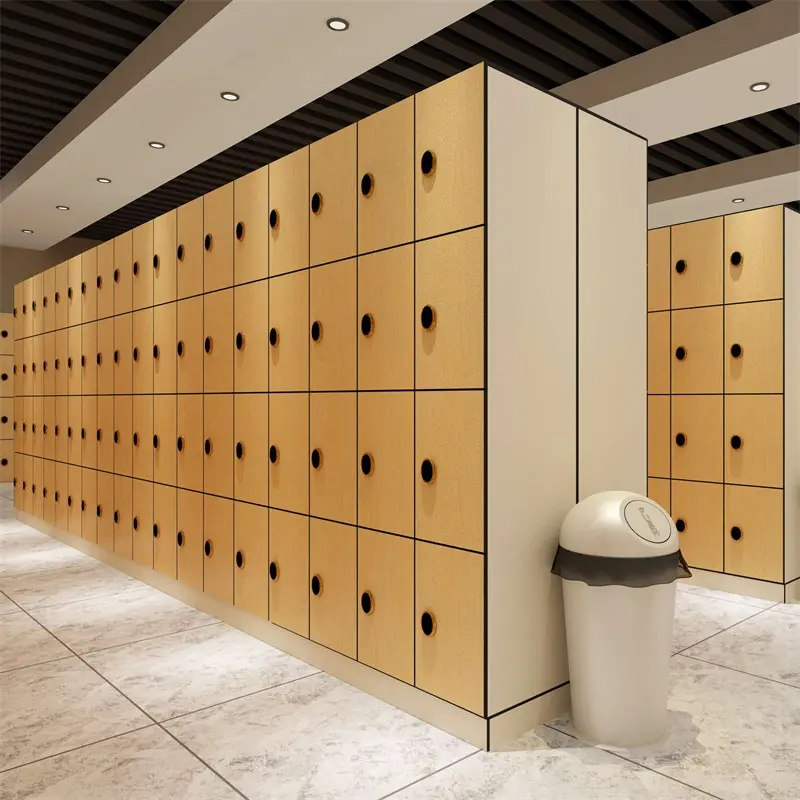Steel is one of the most widely used materials for lockers for sports, and the reason is clear—its robust nature makes it highly effective at resisting scratches and daily wear. Sports facilities see heavy foot traffic: athletes often toss gear like cleats, towels, or water bottles into lockers, and the frequent opening and closing of doors can lead to wear and tear. Steel lockers stand up well to this kind of daily use.
Most lockers for sports made of steel use cold-rolled steel, which is thicker and more sturdy than standard steel. Many also have a powder coating—this layer acts as an extra shield against scratches. Even if a locker is bumped by a gym bag or scraped by a piece of equipment, the powder coating keeps the steel from showing marks easily. Additionally, steel is simple to clean—just wipe it down with a damp cloth to get rid of dirt or sweat, a must for sports lockers that are used every day. For places like gyms, soccer clubs, or college athletic centers, steel lockers are a dependable choice that maintains a good appearance for years.
If you’re looking for a material that’s both lightweight and resistant to scratches and wear, aluminum alloy is an excellent option for lockers for sports. Unlike steel, aluminum alloy isn’t heavy, which makes installing and moving the lockers simpler—ideal for sports facilities that may need to rearrange their space. But don’t be fooled by its light weight; it’s still strong enough to handle regular sports use.
Aluminum alloy has a natural ability to resist corrosion, which is a major advantage for lockers for sports. Athletes often store wet items (such as swimsuits or sweaty workout clothes), and moisture can damage some materials. Aluminum alloy doesn’t rust or tarnish, so it stays in good condition even when exposed to dampness. It also resists scratches effectively—its smooth surface means small scrapes are less visible, and it doesn’t chip like some coated materials. For sports facilities near pools or with high humidity levels, aluminum alloy lockers offer both durability and convenience.
High-Density Polyethylene (HDPE), a type of plastic, is becoming more popular for lockers for sports, especially because of its ability to resist scratches and daily wear. HDPE is a solid, thick plastic that doesn’t dent or scratch easily—even if you drop a heavy weight plate on it, it’s unlikely to leave a mark. This makes it perfect for busy sports facilities where lockers endure a lot of use and potential abuse.
Another big benefit of HDPE is that it’s waterproof. Lockers for sports often come into contact with water, sweat, or mud, but HDPE doesn’t absorb moisture. This means no warping, swelling, or mold growth—issues that can affect other materials. It’s also easy to clean; just use soap and water to wipe away stains, and it looks as good as new. HDPE lockers also come in bright colors, which can add a fun, lively feel to sports facilities like youth gyms or recreational centers. For anyone wanting a low-maintenance, extremely durable option, HDPE lockers deliver on all fronts.
In summary, the top materials for lockers for sports that resist scratches and daily wear are steel, aluminum alloy, and HDPE. Each material has its own unique strengths, so the best choice depends on the specific needs of your facility.
Steel lockers are ideal for high-traffic areas where maximum sturdiness is essential, while aluminum alloy works well if you need lightweight, corrosion-resistant options (great for humid spaces). HDPE lockers excel at low maintenance and extreme scratch resistance, making them perfect for facilities with heavy use or younger athletes. No matter which material you choose, investing in these durable lockers means fewer replacements and lower maintenance costs over time. They keep athletes’ gear secure and your sports facility looking professional—proving that the right material is key to long-lasting, reliable lockers for sports.

